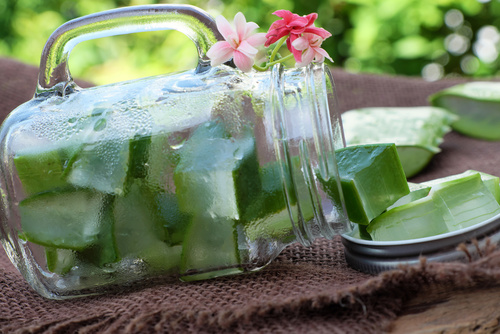People are increasingly consuming packaged food products. These come in both, cooked and uncooked formats. The shelf life of these products is usually limited by their degradation due to bacterial action present inside them. It is due to these microbes that food rots and get spoiled. It also increases the chances of food borne diseases. If these microbes can be removed or neutralized from the food, it can be stored for very long periods, vastly improving its shelf life. Most of the traditional methods such as air tight packing of food with removal of all air/oxygen or substituting air with nitrogen, achieve the desired effect to some extent, but they alter the taste and aroma of the food. This makes them less desirable.
Anti microbial packaging on the other hand involves an active packing material that act to reduce or inhibit the growth of micro organisms that may be present in the packed food. For example; silver has long been used to reduce the microbial or fungal content in food. The downside of using silver is that it’s quite expensive and can be prohibitive if used in large scale commercial application. This has led to development of other compounds that can achieve similar effect of reducing or inhibiting the growth of bacterial and fungal microorganism in packaged food products. They represent one of the most promising concepts in future of food safety and quality. Active packing system in one where the packing material itself interacts with the food substance to provide desirable effects and enhance the shelf life of the packaged food.
Anti microbial packaging can take several forms
- Sachets filled with antimicrobial agent, which are added to food packages.
- Antimicrobial coating onto the polymer surface. i.e application of antimicrobial layer onto plastic surface that is in contact with food.
- Incorporation of antimicrobial compound directing into the packaging material itself.
Of these the first one, i.e the sachets that are either enclosed loose or attached to the wall of packaging are most successful. They absorb the oxygen, water vapour and also emit ethanol vapour, not making the environment inside the packaging inert for any microorganism growth. This reduces the spoilage of the food, such as off-flavour, discolouration and rotting by changing the initial conditions immediately after packing of the food. It also prevents the formation of toxic substances.
On the other hand, the antimicrobial layer on the packaging works by releasing an active substance into the food and headspace which actively renders the microbes inert in the food due their affinity to the food particle. The layer is designed to release the active component in a slow controlled manner throughout the designated shelf life of packed food. This type of packaging is slightly more challenging as it involves choosing the right packaging material that can withstand the application of active layer and choosing the right active compound that will not only not react with ingredients in the food, but act against the right set of microbes which have highest probability of being present in the food being packed.
The global market for antimicrobial packaging is over 250 billion USD already and is expected to grow at CAGR of 7% over next 5 years. The growth will be primarily driven by active and controlled release packaging (which will consist of enzymes, organic acids etc) which will in turn be driven by rapid rise of packaged food and beverage industry. Further, the advancements in technology will make it possible to apply more complex antimicrobial layers to packaging, increasing the shelf life even more.
Following are the key trends that will drive the demand for antimicrobial packaging
- Increased consumption of processed food that is manufactured in factories instead of freshly cooked meals. More processed food will need better packaging for longer storage, especially the out of season food products that need to be stored much longer.
- Smaller portion sizes requiring large number of individual units in retail market consuming more overall packaging, including antimicrobial packaging.
- Repackaging of the food (Food not fully consumed once package is opened but stored for consumption at later time) will need antimicrobial packaging that continues to counter the pathogen that enter food once it is opened and exposed to air.
- Increased awareness about health benefits of food packed in antimicrobial packing, leading to more demand for food packed in such packing, directly by the consumer.
- Increase in competition, which will lead to cost pressures. Reduction in refrigeration requirement of food will be key attractor to use antimicrobial packaging (especially for organic raw food such as milk, meat etc.)
- Processing of food across borders requiring longer storage and increasing the risk of foreign contamination. This will require stringent safety measures for the food to reduce the chance of foreign diseases spreading across the border.
- Increased regulation to maintain health and safety standards of packaged foods by government.
- Technology advancements, making it possible to use antimicrobial packaging for greater variety of food products, more economically.
Packaging industry is undergoing a rapid change. New materials are being discovered that are safe and sustainable. Old methods are being rediscovered that are efficient and cost effective. The changing global dynamics are changing the food habits of people globally. Food is being prepared long before it is consumed and far away from where it is being consumed. Retaining the quality and integrity of food in such situation has become essential to stay relevant to the consumer. Antimicrobial packaging serves to enhance the shelf life of food once it is packed and also after the packaging is opened for consumption.


1 thought on “Antimicrobial packaging: What, Why & The Real Benefits”
Anti microbial packaging has become quite prevalent when it comes to packaging industry, due to the fact that it incorporates antimicrobial agent into a polymer film to suppress the activities of targeted microorganisms that are contaminating foods